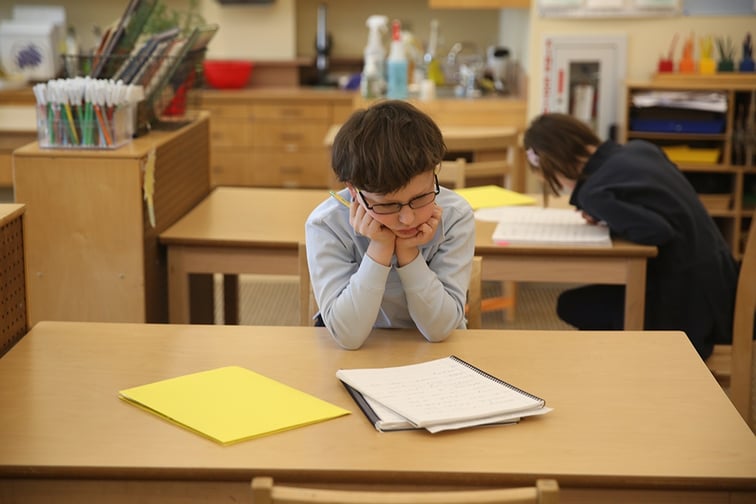So we’ve all heard about time out, right? What about time-in? Well, for me, my co-teacher, and our fourth grade students, it’s become a daily practice.
This past summer I attended a "Mindfulness in Education" workshop at Bank Street College. That day I felt frazzled and overwhelmed — yes, that happens even over the summer — but something changed for me. It became a link to an answer to a question I’d had as a teacher for ten-plus years. And it made me think of Gandhi’s quote “Be the change you wish to see.”
During this workshop — and another one I attended at the Greenwich Board of Education — both instructors talked about the fact that in our society today, statistically, four out of 10 children suffer from differing levels of anxiety. To me, that was so sad to hear, but not surprising.
Over the past 10 years of the 22 I have been teaching, I’ve noticed and observed a few things in my students. It feels as if there is an underlying tone of anxiety amongst them, and I’ve observed too many children alone on the playground not knowing how to make connections with their peers.
Though I know there can be many variables for why this is happening, it’s something that's bothered me to the point that I felt I could no longer stay idle. Looking for a coping strategy to teach our children to improve their emotional health and self-awareness became a goal of mine. And that's where time-in comes into play.
In essence, time-in is comparable to mindfulness. In our classroom, we have our students practice different activities to achieve this including silent time and reflecting on what they appreciate. Additionally, we emphasize thinking before you speak by having them consider three things about what they'd like to say — is it necessary, is it kind, is it true? Lastly, we also focus on mindfulness through senses. With their eyes closed, students have to guess what a certain object is based on its sound, taste or touch.
After several weeks of time-in, we asked our students to tell us how time-in has helped them:
Time-in...
- Makes me a better person
- Makes me happy
- Makes me think about what I’m nervous about and think about it differently
- Gives me time to think about things I don’t usually have time to think about
- Marks a time in the day and helps me keep track of time
- Gives me time to think about creative things (and imaginative things)
- Makes me think about things I appreciate
- Makes me think about things I love… things that are impossible and maybe think that one day they may be possible

There were many days at the beginning of our time-in practice where students were uncomfortable with the silent time (wanting to fill it with giggles and goofy faces at their peers), but it has been well worth the effort. This tool could actually be something that could guide them as a life-time skill and practice.
In many cases — as students and as adults — it can be easy to forget the importance of mindfulness, self-care and reflection, but setting aside a dedicated time-in is an easy and effective reminder for us to stop and slow down.


